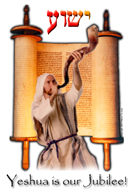

“As the mountains are round about Jerusalem, so the LORD is round about his people from henceforth even forever.” - Psalm 125:2
1 - Mount of
Olives
2 - Mount Moriah
3 - Mount Zion

Jerusalem, except on the north, is encompassed with hills or mountains. As Jerusalem is thus protected by the hills around, so the people of God are protected by God. The following describes the three main mountains of Jerusalem.
1
The Mount of Olives
The Mount of Olives is on the east side of the city, across the Kidron
Valley. It is made up of three low hills, averaging approximately 2700
feet in elevation. From here, the drop to the Dead Sea, twenty-five
miles east, is about 4200 feet. Because of this difference in elevation,
the Dead Sea and the mountains of Moab beyond are clearly visible from
the Mount of Olives. The range of hills called the Mount of Olives includes
from the north: Mount Scopus (probably Nob referenced in 1 Samuel 21:1
- the residence of priests in Saul’s time), Olivet (2900 feet)
and the Mount of Destruction where Solomon built altars, etc. for his
pagan wives (1 Kings 11:2, 2 Kings 23:13). The Mount of Olives is known
in traditional Judaism as the Mountain of the Messiah, and Yeshua spent
much time there. The central part of the Mount of Olives was a favorite
resting-place for Galileans when they came to Jerusalem for the feasts.
Scripture mentions several times that Yeshua rested on the Mount of
Olives (Luke 21:37; John 8:1; Luke 22:39). Note that several significant
sites in Yeshua's ministry are located on the Mount of Olives and will
be described separately. These include the approximate area where David
and Yeshua each wept over Jerusalem, Yeshua's triumphal entry into Jerusalem,
and the Garden of Gethesemane (where Yeshua and His disciples went after
celebrating the last Passover and where Yeshua was arrested).
The Mount of Olives is also where Yeshua ascended into heaven following His resurrection, as is written in Acts 1:6-12.
2
Mount Moriah
Mount Moriah is a ridge that ranges in elevation from approximately
1969 feet at the south end of the junction of the Kidron and Hinnom
valleys to a maximum of 2549 feet to the north. The Temple mount is
at a height of approximately 2430 feet. North of where the altar was/would
be (on Mount Moriah) is likely where Yeshua was crucified and where
Isaac was offered. Leviticus 1:11 describes how a sacrifice should be
slain north of the altar.
Mount Moriah is where King David purchased Araunah's threshing floor to build the first Holy Temple of God. His son, King Solomon, completed the Temple in 953 B.C. It was destroyed in 586 B.C. by the Babylonians but had largely been rebuilt by 30 A.D.
3
Mount Zion
Mount Zion is approximately 2533 feet in elevation. Sometimes Scripture
refers to Jerusalem as "Zion" or "Mount Zion" and
sometimes Mount Moriah is referred to as "Mount Zion". The
physical Mount Zion is not the same Mount Zion of which much of Scripture
speaks. Much Scripture speaks of a heavenly Mount Zion:
“But ye are come unto mount Zion, and unto the city of the living God, the heavenly Jerusalem, and to an innumerable company of angels.” - Hebrews 12:22
“Then the moon shall be confounded, and the sun ashamed, when the LORD of hosts shall reign in mount Zion, and in Jerusalem, and before his ancients gloriously.” - Isaiah 24:23
When Yeshua returns with His Bride, He will reign forever. After one thousand years God will restore Heaven and earth, and upon the new earth God will place the New Jerusalem. These events were revealed to the Apostle John while prisoner on the isle of Patmos and are detailed in Revelation 21.